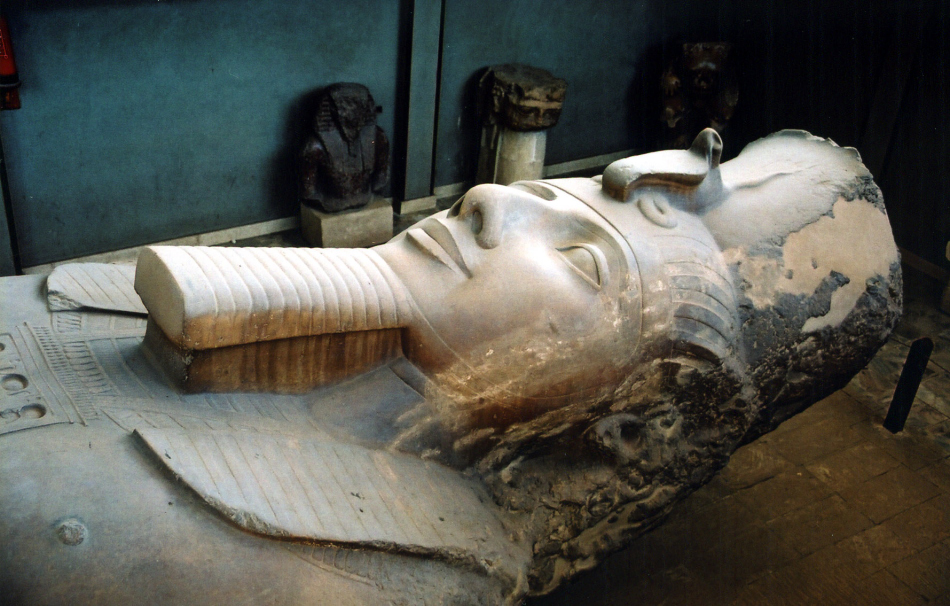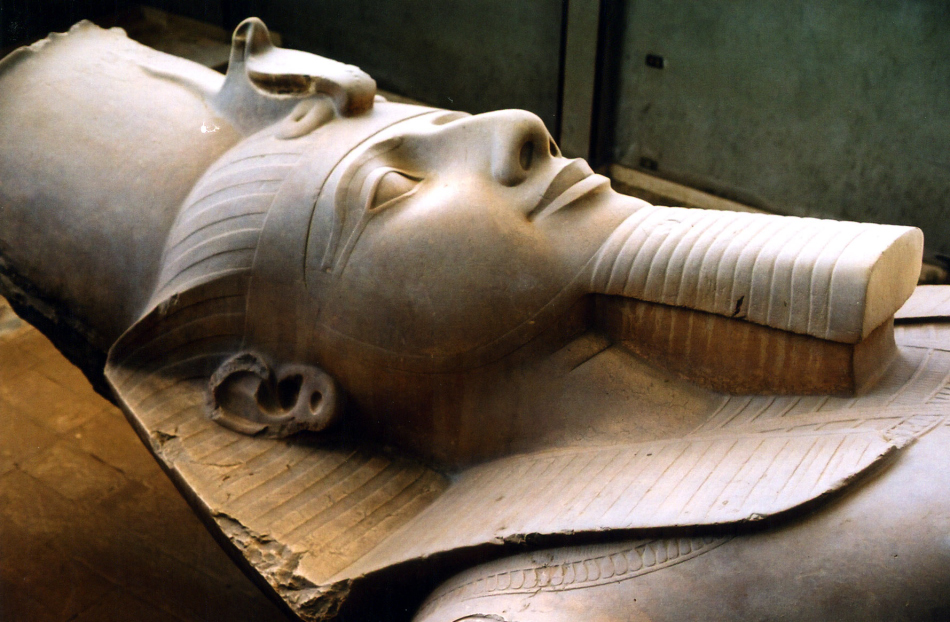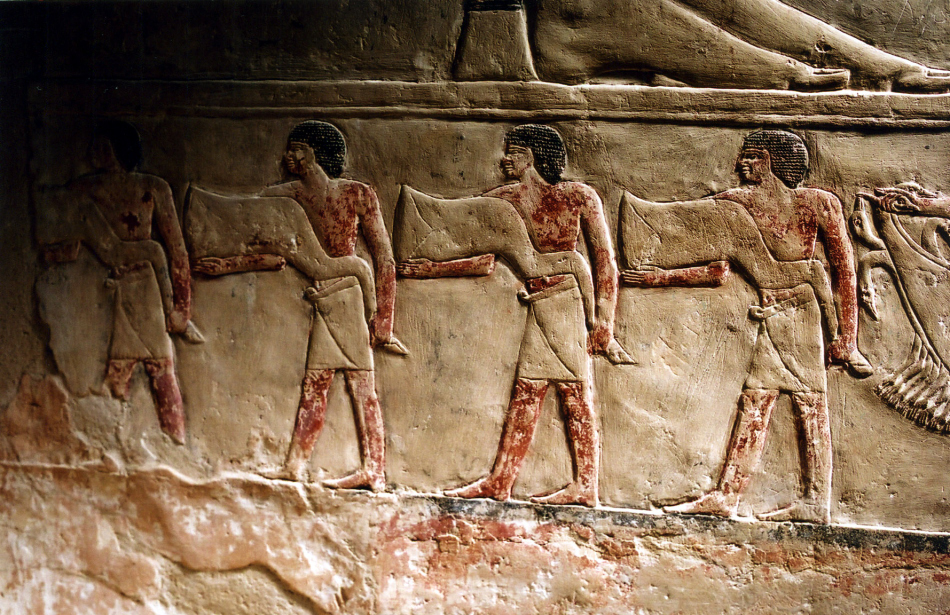PYRAMID EXPERIMENT & THE COLOSSUS, Dahshur & Memphis, Egypt

2006.05.28.
While Pharaoh Khufu stole the limelight for 4,500 years as the king who built the Great Pyramid of Giza, much few people may acknowledge that Khufu’s success was built upon the earlier experiments of his father, Pharaoh Sneferu. At 40km south of Cairo, Dahshur was the experimental ground for Sneferu, who famously built the three predecessors that ultimately led to the success of his son’s Great Pyramid. The three Sneferu’s pyramids in Dahshur reveal the evolution of pyramid construction, from Meidum Pyramid: Egypt’s first smooth-sided pyramid that had partially collapsed since the ancient times, to Bent Pyramid: another smooth-sided pyramid whose change of inclining angle midway had led to a bent effect, and finally to Red Pyramid: Egypt’s first successfully constructed smooth-sided pyramid.
After Saqqara, we intended to go to Abusir, another necropolis of Memphis just like Saqqara. However, we were told that Abusir was not open for some reason, so we turned to Dahshur instead. Dahshur was another well-known necropolis that served the royal members of Memphis in the Old Kingdom. Famous for its three unique pyramids, Dahshur is a must-see site if one is interested in Egyptian pyramids. Our taxi drove us to pass by the Bent and Black Pyramid, and then stopped at the biggest of them all, the Red Pyramid. There were not many tourists around, so we decided to pay the admission to enter the Red Pyramid. Named after the slightly reddish limestone, the Red Pyramid is Egypt’s third largest and also the oldest smooth sided pyramid.
The sloped passage down to the burial chamber at the pyramid’s heart was narrow and dimly lit. With an slope of 27 degrees down, a 1.2m width and 0.91m height, the journey down the 61m passage was no small feat. For the entire way we were forced to hunch down with our backs touching the passage ceiling, and move down carefully one step at a time. We heaved a sigh of relief after reaching the end of the tunnel, but was a little disappointed to find the empty chamber at the end. As expected no artifacts were in display in the chamber. The 15m corbel vaulted ceiling was quite impressive, given the fact that we were almost 100m below the top of the pyramid, under millions of tons of limestone.
Our next stop was Mit Rahina Museum or what commonly known as the Memphis Open Air Museum. Memphis, the ancient Egyptian capital in the Old Kingdom, was once a prosperous trading, manufacturing and religious centre in the region of Nile Delta. For many centuries, the ruins of the abandoned Egyptian capital had been pillaged for constructing other structures in the nearby Arab cities. Not much of the great city survived to the present day, except the artifacts in the open air museum and what might still lie underground. The biggest draw of the museum is an enormous limestone statue of Ramses II lying in the establishment’s feature gallery.













STEP PYRAMID OF SAQQARA, Memphis, Egypt

2006.05.28.
From the pyramids on Giza Plateau to the royal tombs in Valley of the Kings, their belief in afterlife, rebirth, and life of immortality have shaped the cultural identity of the ancient Egyptians for thousands of years. From the Classical time to the modern age, tourists travel to Egypt from around the world to see their majestic monuments dedicated to their afterlife beliefs. Ever since seeing real mummies as a boy in the British Museum, checking out the Egyptian pyramids and tombs has been included on my wish list for a long time. As a boy, I could never imagine how touristy and commercialized the actual visit of the archaeological sites have became, nor would I acknowledge that the Great Pyramids and Sphinx are actually situated just a stone throw away from the urban area of Giza, the third largest city in Egypt. Often, the experience of traveling would involve fulfilling a dream while at the same time accepting the reality.
While visiting Sinai felt like a continuation of our experience of the Arabian Desert (Petra and Wadi Rum), arriving in Cairo gave us a sense of entering another chapter, the final one this time, of our Middle East trip. At Luna Hotel, we hired a taxi for our first day in Cairo. Our intention was to do a day excursion at the outskirts of Cairo, probably the most popular day trip for all tourists coming to Egypt. Our first stop was Saqqara at 30km south of Cairo. Saqqara was the royal necropolis of Memphis, the capital of Lower Egypt. Many kings and nobles of the early dynasties and the Old Kingdom were buried at Saqqara. At Saqqara, the most famous monument is the Pyramid of Djoser, which is also the oldest surviving stone building in the world. Before we headed to the world famous step pyramid, a staff led us into one of the many tombs in the archaeological site. Inside the tomb, detailed wall inscriptions and paintings were well preserved. Apart from depictions of kings and divinities, I was particularly interested in the figures that illustrate religious possessions and ceremonial feasts.
Outside the tomb, we reached the main funeral complex of the Pyramid of Djoser. The complex was crowded with tourist groups, each was led by a tour guide holding an umbrella and speaking with a microphone. We walked past the tourist groups and through the funeral complex to reach the famous stepped pyramid. Out of all mastabas and tombs in Saqqara, Djoser’s stepped pyramid is certainly the most unique and iconic. The massive monument of terracing stone masonry, dated back to 27th century BC, is known as the earliest pyramid in Egypt, and the predecessor for the Great Pyramids of Giza.












